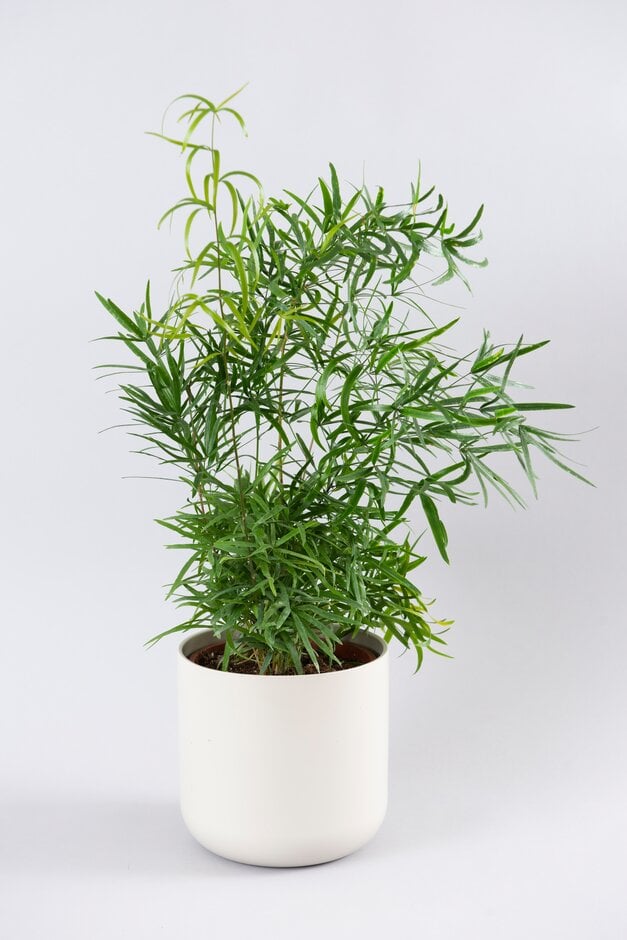Asparagus falcatus
sicklethorn
A perennial with lax stems that may develop thorns, and start to twine once mature, needing support such as a moss pole. Foliage has long, narrow, glossy, dark green leaflets, and sprays of small, white, scented, star-shaped flowers are produced in summer, followed by red berries
Size
Ultimate height
1.5–2.5 metresTime to ultimate height
2–5 yearsUltimate spread
1–1.5 metresGrowing conditions
Moisture
Moist but well–drained, Well–drainedpH
Acid, Alkaline, NeutralColour & scent
| Stem | Flower | Foliage | Fruit | |
| Spring | Green | |||
|---|---|---|---|---|
| Summer | White | Green | ||
| Autumn | Green | Red | ||
| Winter | Green |
Position
- Partial shade
Aspect
East–facing or West–facing
Exposure
Sheltered Hardiness
H2Botanical details
- Family
- Asparagaceae
- Native to GB / Ireland
- No
- Foliage
- Evergreen
- Habit
- Climbing, Bushy
- Potentially harmful
- Skin allergen, fruits harmful if eaten. Wear gloves and other protective equipment when handling
- Genus
Asparagus can be evergreen or deciduous perennials or subshrubs, sometimes climbing, with tuberous rootstock. Stems bear both inconspicuous scale-like leaves and larger, leaf-like phylloclades, with small white or pinkish flowers followed by red berries
- Name status
Correct
- Plant range
- Africa, Asia
How to grow
Cultivation
Grow under glass in a peat-free, loam-based potting compost such as John Innes No.2 in bright, filtered light sheltered from hot sun. Keep frost free. Water freely from spring to mid-autumn; water more sparingly in winter. Pot on in spring. Provide support once climbing shoots develop
Propagation
Propagate by seed or by cuttings
Suggested planting locations and garden types
- Houseplants
- Conservatory and greenhouse
Pruning
No pruning required
Pests
May be susceptible to asparagus beetle, slugs and snails
Diseases
Generally disease-free
Love gardening
Sign up to receive regular gardening tips, inspiration, offers and more
View our Privacy Policy
Get involved
The Royal Horticultural Society is the UK’s leading gardening charity. We aim to enrich everyone’s life through plants, and make the UK a greener and more beautiful place.

